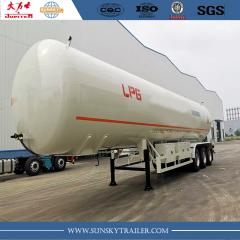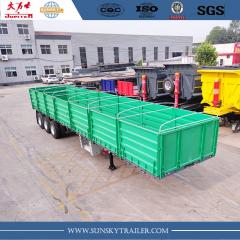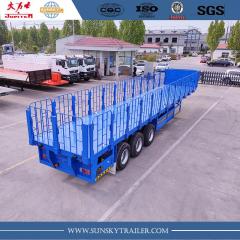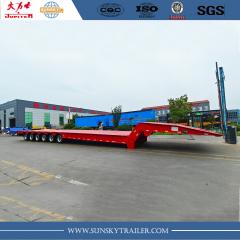- Blog
- Pourquoi les pneus mangent-ils?
- À quoi sert une remorque surbaissée ?
- Causes des accidents de semi-remorques
- Combien de tonnes fait un semi-remorque ?
- Qu'est-ce qu'une remorque surbaissée ?
- Quel poids une semi-remorque à plateau peut-elle transporter ?
- semi-remorque de transport
- semi-remorque citerne de carburant
- Semi-remorque citerne à glaçons
- Semi-remorque plateau extensible
- semi-remorque porte-conteneurs à plateau
- remorques de carburant
- semi-remorque citerne lng
- Semi-remorque porte-vrac 30 cbm
- Camion tracteur 6X4 neuf de HOWO
- remorque citerne de ciment en vrac
Catégories
Messages récents
Tags
- Semi-remorque
- Side Wall Trailer
- remorque à plateau
- Interlink Semi Trailer
- bande-remorque
- semi-remorque surbaissée
- Trailer de ciment en vrac
- remorque porte-conteneurs
- remorque citerne
- LPG camion citerne semi-remorque
- pétrolier en aluminium
- semi-remorque citerne chimique
- remorque citerne en acier inoxydable
- modulaire
- remorque bois Journal
- semi-remorque de transporteur voiture
- remorque à pales éoliennes
- HOWO camion
- REMORQUE À BARRE D'ATTELAGE
- FAW TRUCK
Les pétroliers sont capables de transporter de gros volumes de carburant, ce qui contribue à améliorer l’efficacité du transport en transportant plus de marchandises à la fois. Par rapport aux camions-citernes traditionnels, les semi-remorques ont la capacité de transporter des quantités de pétrole encore plus importantes.
Les camions-citernes de pétrole brut disponibles à l'achat sont dotés de conceptions et de matériaux plus avancés, ce qui améliore la stabilité et la sécurité de l'ensemble du véhicule. Les fonctions de sécurité telles que les mesures anti-fuite et anti-collision ont été encore renforcées. Chez Sunsky Vehicle, il est possible de personnaliser un camion-citerne d'une capacité allant de 20 000 à 50 000 litres, par exemple, une remorque-citerne de carburant en aluminium de 45 000 L est au prix de 24 000 $. En Afrique, les semi-remorques citernes d'une capacité de 40 000 à 45 000 litres sont particulièrement appréciées.
Remorques citernes à vendre en Afrique du Sud
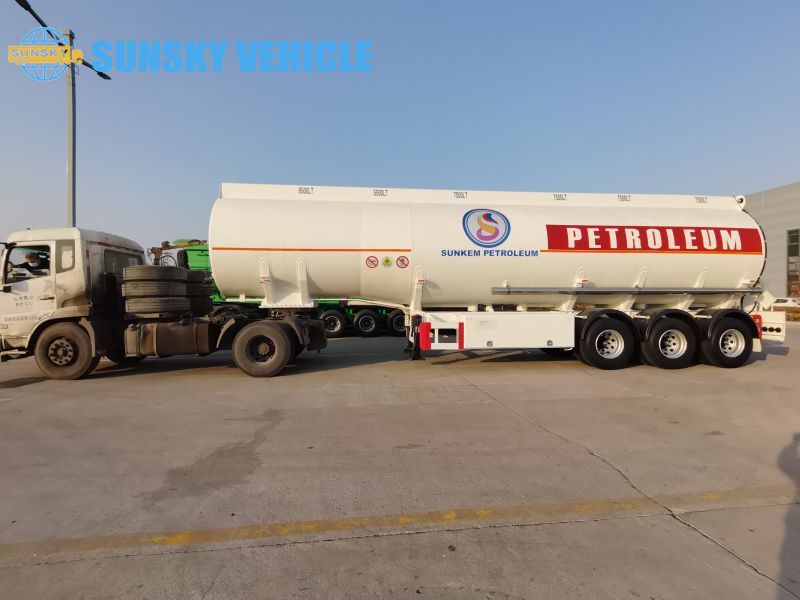
Remorques citernes à vendre en Afrique du Sud
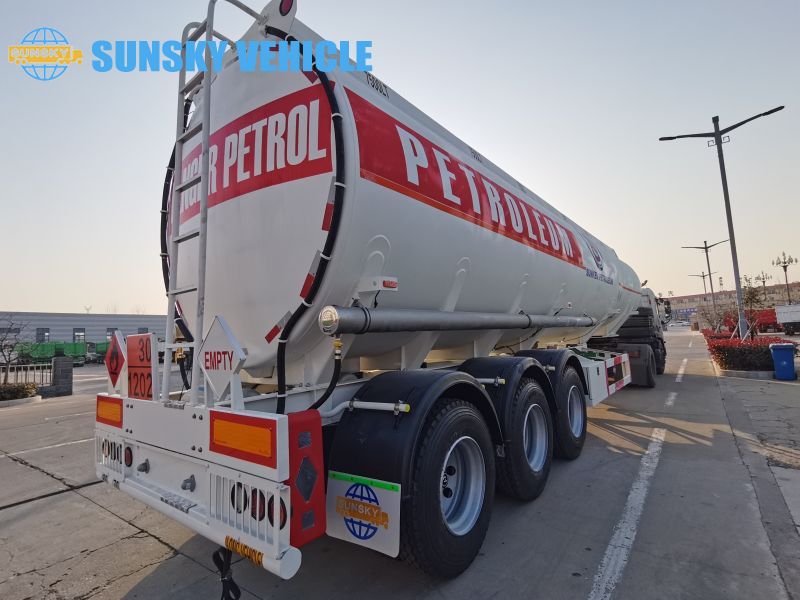
Remorques citernes à vendre en Afrique du Sud
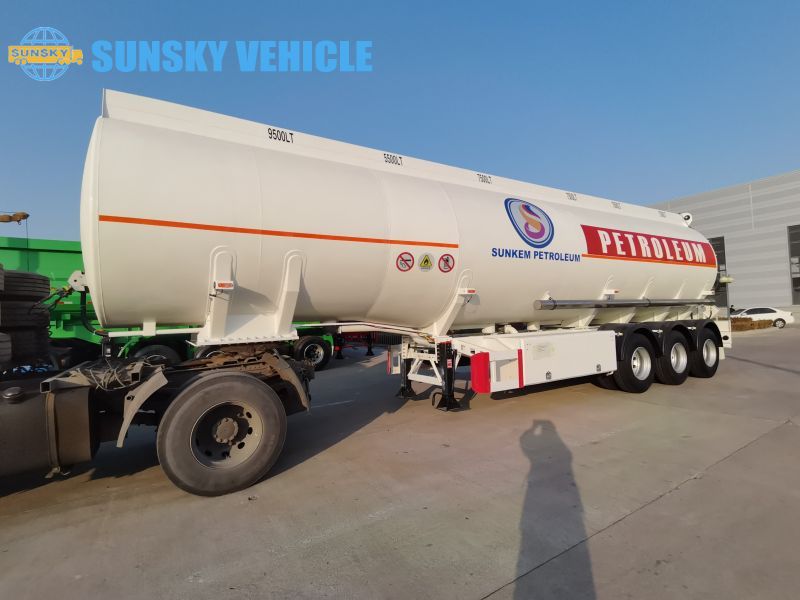
Lors de la manipulation de produits chimiques dangereux, toute erreur lors du chargement et du déchargement du camion-citerne peut conduire à une catastrophe. Quelles sont les exigences de sécurité pour ces opérations ?
Quelles sont les exigences de sécurité pour les opérations de chargement et de déchargement des pétroliers avant le chargement et le déchargement ?
Voici les exigences de sécurité pour les opérations de chargement et de déchargement des pétroliers :
1. Avant d'entrer dans l'établissement, les conducteurs doivent présenter le « connaissement » ou « bon de livraison », le permis de conduire du véhicule, le permis de conduire, le permis d'escorte et effectuer toutes les démarches nécessaires. Ce n'est qu'après que le véhicule et le personnel ont été minutieusement inspectés et évalués par le fabricant en termes de sûreté et de sécurité qu'ils doivent se rendre à la zone de chargement et de déchargement. Il est strictement interdit d'apporter des objets non antidéflagrants tels que des téléphones portables et des briquets, ainsi que des articles d'urgence et du personnel non concerné dans la zone de chargement et de déchargement.
2. Avant de commencer les opérations de chargement et de déchargement, les opérateurs doivent s'assurer que le camion-citerne est correctement positionné au niveau de la grue de chargement et de déchargement, couper le contact, garer le véhicule en toute sécurité, placer un équipement antidérapant et des dispositifs d'avertissement devant le véhicule pour empêcher tout mouvement et remettre la clé de la voiture à l'atelier de chargement et de déchargement (station) pour une garde unifiée.
3. Il est essentiel de s'assurer que le dispositif de mise à la terre électrostatique du wagon-citerne et de la palette de chargement et de déchargement est solidement connecté.
4. Le personnel de chargement et de déchargement, ainsi que le chauffeur ou l'accompagnateur, doivent s'assurer conjointement que le raccord rapide entre le bras de chargement et de déchargement et l'orifice de remplissage de l'automobile-citerne est correctement serré et verrouillé, et que les signatures correspondantes sont confirmées.
5. Avant de commencer les opérations de chargement et de déchargement, le personnel responsable de l'équipement, y compris les opérateurs de chargement et de déchargement, les accompagnateurs et les conducteurs, doivent effectuer des inspections de sécurité pour confirmer qu'il n'y a aucune anomalie.
Chargement et déchargement
1. La vidéosurveillance doit être maintenue tout au long du processus de chargement et de déchargement. Un cordon doit être établi autour des véhicules de chargement et de déchargement pour empêcher le personnel et les véhicules non autorisés d'entrer.
2. En cas d'anomalie pendant le chargement et le déchargement, l'escorte ou le conducteur doit être capable de fermer rapidement le robinet d'arrêt d'urgence du camion-citerne.
3. Il est strictement interdit de remplir le camion-citerne au-delà de sa capacité maximale de conception, et tout remplissage excessif est également strictement interdit.
Après le processus de chargement et de déchargement :
1. L'opérateur de chargement et de déchargement arrête le compteur de chargement et ferme le robinet d'arrêt et la pompe de chargement devant le bras de chargement et de déchargement.
2. L'escorte ou le chauffeur ferme la valve du véhicule et l'orifice de remplissage du véhicule, et l'opérateur de chargement et de déchargement ajoute une étiquette fermée.
3. Après inspection et confirmation, le camion-citerne est complètement séparé du tuyau de connexion du chevalet de chargement et de déchargement, du fil conducteur électrostatique et des autres pièces de connexion, et le véhicule est libéré du chevalet de chargement et de déchargement.
Instructions d'utilisation :
1. N'utilisez pas de tuyaux pour charger et décharger des hydrocarbures liquéfiés. Ne laissez pas de véhicules attendre sur le site de chargement et de déchargement. Après le chargement et le déchargement, les véhicules ne doivent pas rester sur le site et le personnel non autorisé n'est pas autorisé à pénétrer sur le site d'exploitation. Aucune source d'inflammation n'est autorisée sur le site d'exploitation. Les opérations continues de chargement et de déchargement sont strictement interdites 24 heures sur 24.
2. Les opérations de chargement et de déchargement de nuit doivent être évitées (après 20h00), sauf si les réglementations routières du gouvernement local ou les besoins de production de l'entreprise l'exigent. Dans de tels cas, les entreprises de production et les sociétés professionnelles devraient étudier conjointement, améliorer la surveillance sur site, le personnel de réparation d'urgence, l'allocation du matériel et l'éclairage nocturne. De plus, un plan spécial d’intervention d’urgence pour les véhicules de chargement et de déchargement de nuit devrait être élaboré.
3. Les opérations de chargement et de déchargement ne doivent pas être effectuées dans les circonstances suivantes :
(1) Des conditions météorologiques extrêmes telles que des orages et des tempêtes de sable sont présentes.
(2) Des situations dangereuses telles que des flammes nues à proximité ou des conditions de travail anormales des équipements et des canalisations dans la zone de chargement et de déchargement se produisent.
(3) Des anomalies dans les véhicules à hydrocarbures liquéfiés ou leurs accessoires de sécurité, accessoires de chargement et de déchargement, etc., sont détectées.
(4) Une fuite de gaz est trouvée ou détectée.





